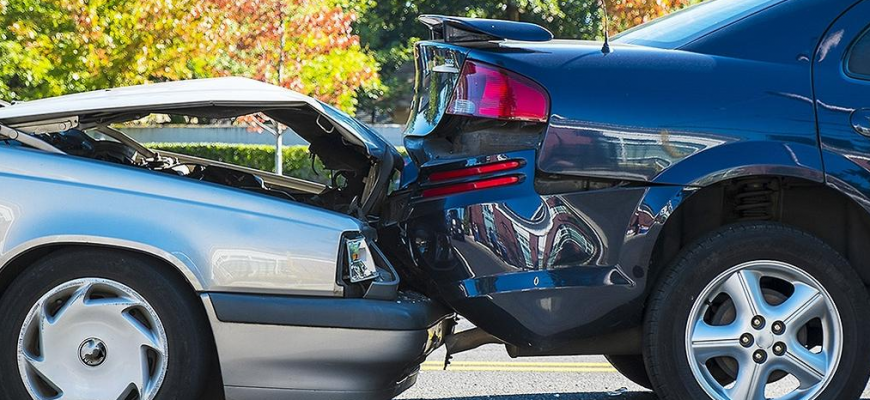Navigating Car Insurance: Comprehensive vs. Third Party in Collision Repair

Understanding the nuances of car insurance can be a daunting task, especially when faced with the aftermath of a collision. In Australia, drivers have several insurance options, but the choice between comprehensive and third-party insurance becomes particularly significant when it comes to collision repairs. This article aims to demystify these options, providing you with the knowledge to make an informed decision.
Understanding Car Insurance in Australia
Car insurance is an essential consideration for every Australian driver. It not only offers financial protection against unexpected incidents but also is a legal requirement in some forms. The Australian car insurance market offers a range of products, including comprehensive insurance, third-party property damage, third-party fire and theft, and compulsory third party (CTP) insurance. Each type serves different needs, but when it comes to collision repairs, the choice often boils down to comprehensive vs. third-party insurance.
Comprehensive Car Insurance
Comprehensive car insurance offers the most extensive coverage, including damage to your vehicle and others’ property, theft, fire, and natural disasters. Its coverage of collision repairs is particularly noteworthy. If you’re involved in an accident, comprehensive insurance will cover the cost of repairing or replacing your vehicle, regardless of who is at fault.
Benefits
Peace of Mind: Knowing that your car is covered against a wide range of incidents can provide significant peace of mind.
Financial Protection: In the event of a collision, you won’t be out of pocket for the repairs or replacement of your vehicle.
Additional Features: Many comprehensive policies offer extra benefits, such as a courtesy car while yours is being repaired.
Drawbacks
Higher Premiums: This extensive coverage comes at a cost, with higher premiums than third-party insurance.
Excess Payments: You may need to pay an excess when making a claim, which can vary based on the policy and the nature of the claim.
Example Scenario
Imagine you accidentally reverse into a pole, causing significant damage to your car. With comprehensive insurance, you can claim the cost of the repairs, minus any excess. Without it, you’d be facing a hefty repair bill on your own.
Third-Party Car Insurance
Third-party car insurance covers damage to other people’s property and legal costs associated with such damage, but it does not cover repairs to your own vehicle in the event of a collision. It’s divided into two main types: third-party property damage and third-party fire and theft.
Benefits
Lower Premiums: Third-party insurance is more affordable than comprehensive insurance, making it a good option for drivers on a budget.
Legal Coverage: It provides coverage for legal costs if you’re at fault in an accident that causes damage to someone else’s property.
Limitations
No Coverage for Your Vehicle: If you’re at fault in a collision, you’ll have to pay for your own car’s repairs.
Limited Protection: Third-party fire and theft offer some protection for your vehicle but only in specific circumstances.
Example Scenario
If you collide with another car and are found to be at fault, third-party insurance will cover the repairs to the other driver’s car, but you will need to cover the cost of repairing your own vehicle.
Comparing Comprehensive and Third-Party Insurance in Collision Repair
When deciding between comprehensive and third-party insurance for collision repairs, consider the following:
Value of Your Vehicle: Comprehensive insurance is generally recommended for newer or higher-value cars.
Financial Situation: If you would struggle to pay for repairs out of pocket, comprehensive insurance offers greater protection.
Driving Habits: Frequent drivers or those who commute in heavy traffic may benefit more from comprehensive coverage.
Making an Informed Decision
Choosing the right car insurance requires a balance between coverage and cost. Consider your vehicle’s value, your financial ability to pay for unexpected repairs, and your risk tolerance when making this decision.
Conclusion
Navigating car insurance options in Australia, especially when it comes to collision repairs, doesn’t have to be complicated. By understanding the differences between comprehensive and third-party insurance, you can choose the policy that best suits your needs, ensuring you’re well-protected on the road.
Car Accidents Without Insurance: A Guide for South Australian Drivers

Every year, numerous South Australians find themselves tangled in the aftermath of car accidents. Among these incidents, a significant portion involves drivers without insurance, leading to complex legal and financial dilemmas. This article aims to navigate South Australian drivers through the immediate steps and considerations following a car accident, particularly when uninsured, ensuring safety and minimizing potential repercussions.
Understanding Insurance Requirements in South Australia
In South Australia, it’s mandatory for all vehicle owners to have Compulsory Third Party (CTP) insurance, which is included in vehicle registration fees. This insurance covers injuries to people if the vehicle owner or driver is at fault in an accident. However, it does not cover damage to vehicles or property, which is where comprehensive or third-party property insurance comes into play. Driving without at least CTP insurance is illegal, with severe penalties for non-compliance, highlighting the gravity of maintaining at least the minimum insurance coverage.
Immediate Steps Following a Car Accident
Ensure Safety
The immediate aftermath of a car accident can be chaotic and confusing. The first priority should always be safety. Check for injuries among all parties involved. If anyone is injured, call emergency services immediately. If the vehicles are posing a hazard, move them to a safe location, if possible.
Call for Help
South Australian law requires the police to be notified if the accident causes injury or significant property damage. If in doubt, it’s safer to call the police. They can provide necessary assistance and create an official accident report, which may be crucial for legal and insurance purposes.
Assessing the Situation and Information Exchange
Once everyone’s safety is ensured, exchange names, addresses, phone numbers, and vehicle details with the other driver(s). Note the location and time of the accident, and if possible, take photos of the scene and any damages. Avoid discussions about who is at fault, as these statements can complicate legal and insurance matters.
Dealing with a Car Accident Without Insurance
Legal and Financial Implications
Driving without insurance can expose you to significant financial risks. If found at fault, you could be liable for the cost of repairs to all vehicles involved, as well as compensation for any injuries. These expenses can be financially crippling, underscoring the importance of at least having CTP coverage.
Seeking Legal Advice
It’s advisable to consult a legal professional to understand your rights and obligations following an accident, especially if uninsured. They can provide guidance on how to navigate potential claims against you and explore options for managing the financial implications.
Importance of Choosing a Trusted Crash Repairer
In the event of a car accident, choosing a reputable crash repairer is crucial, particularly before contacting your insurer, if you have a choice of repairer. This decision can significantly impact the quality of repairs and the overall outcome of your claim. Investigate local repairers, read reviews, and seek recommendations to find a trustworthy service provider. This proactive approach can prevent insurers from directing you to less reputable repairers, ensuring a higher standard of repair for your vehicle.
Reporting to Authorities and Insurance Considerations
Report the accident to the police if required by South Australian law, and obtain a copy of the report for your records. If you have insurance that covers damage to others, notify your insurer as soon as possible. Provide all necessary details and cooperate with their investigation. If you lack comprehensive insurance, discussing the situation with a legal advisor can help you understand how to manage any claims made against you.
Navigating a car accident without insurance in South Australia requires a clear understanding of legal requirements, immediate steps for safety, and strategic decisions regarding vehicle repairs. While the consequences of driving uninsured can be severe, taking informed actions post-accident can mitigate the negative impacts. Ultimately, maintaining appropriate insurance coverage is the most effective strategy to protect yourself from the significant financial and legal risks associated with car accidents. Prioritize safety, stay informed, and drive responsibly to minimize the chances of finding yourself in such a predicament.

